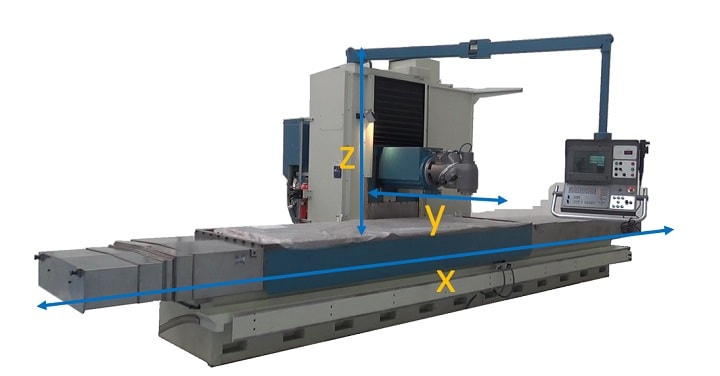How a CNC milling machine works
The use of the computerized numerical control (CNC) in the industrial machinery has introduced programmable automation of production and the achievement of movements impossible to perform manually. This allows an improvement of productivity, accuracy, security, speed, repeatability and flexibility, which also leads in a reduction of waste.

Thereby, a CNC milling machine is capable to control the movement of 3 or more axes simultaneously by means of electronic signals regulated and coordinated by a numerical control software. Once being programmed, it executes them sequentially and automatically, producing the machining of the part under the supervision of the technician, who does not need to intervene in the machining process.
In the particular case of a bed type milling machine, the 3 axes movements which are controlled by the CNC are as follows:
- X axis: Moves the working table in both directions, being the clamping surface of the part.
- Y axis: Transverse movement regulating the depth of the ram.
- Z axis: Vertical movement that varies the height of the ram and framework from the working table.
